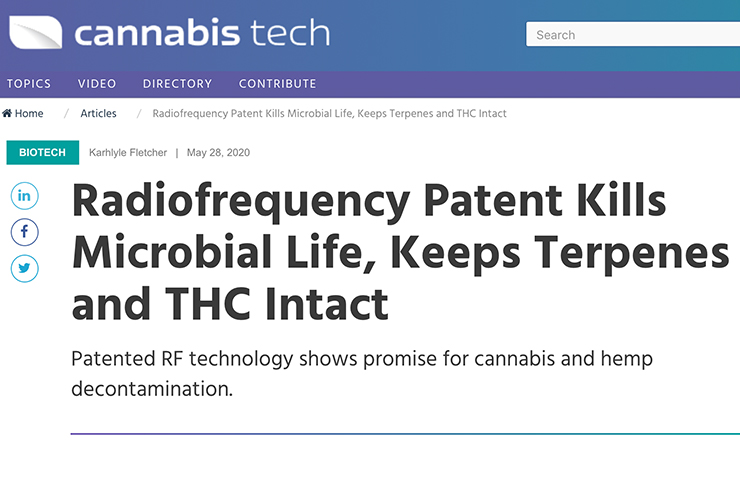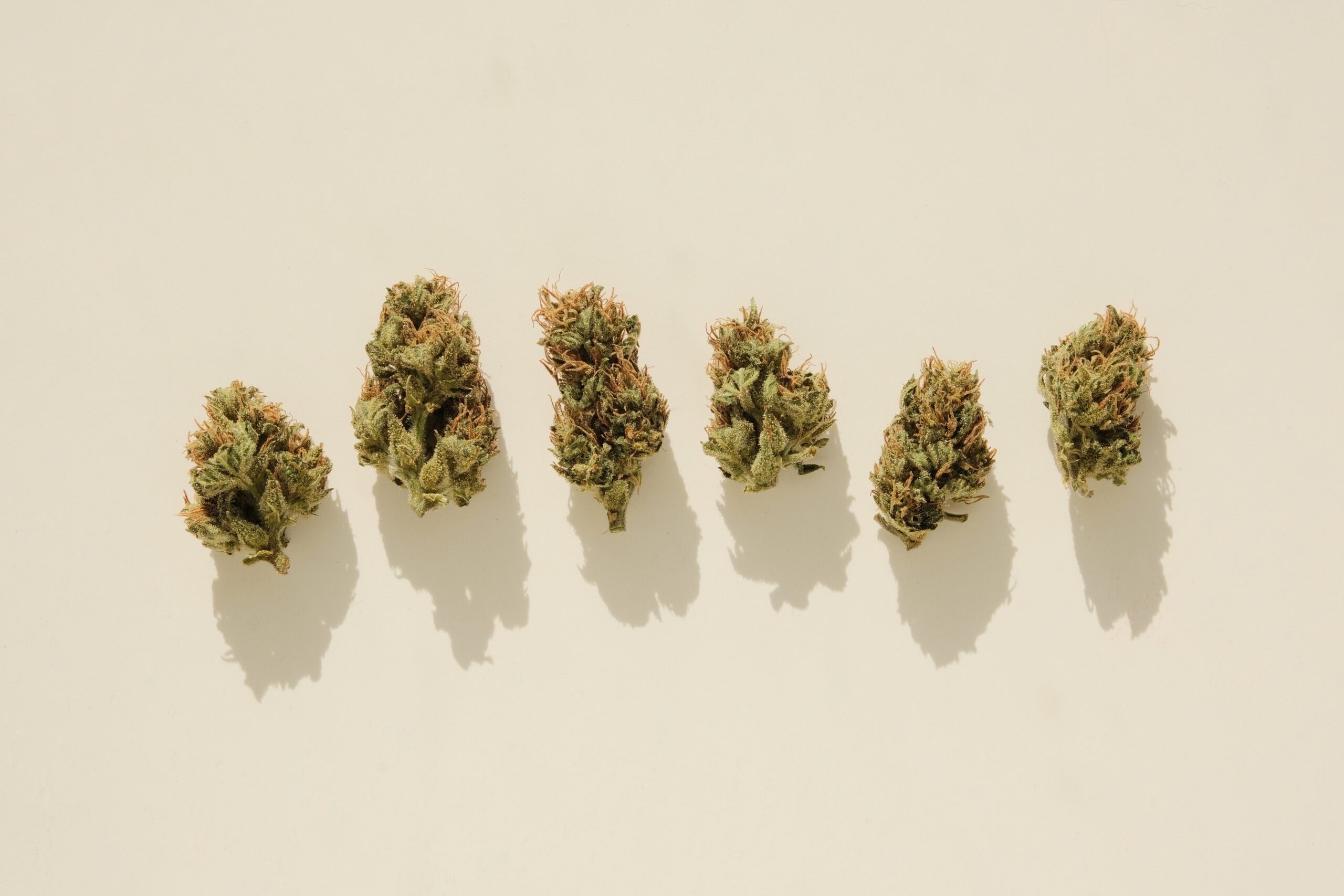MICROBIOLOGY TEST - FAQ
What is a microbiology test?
A microbiology test is a laboratory procedure to examine and characterize microorganisms such as bacteria, yeast, mold and other pathogens. In cannabis the term “microbiology testing” refers to counting the number of bacteria, yeast, mold, etc., or testing whether a specific pathogen is present in the product or not.
What is log reduction in microbiology?
In microbiology “log reduction” is a measure of how effective a process is at reducing pathogens. The greater the log reduction the more effective the process is at killing pathogens. ‘Log’ is short for logarithm, a mathematical term. Every ‘log’ increase is a 10-fold increase. For example, 3-log is 103 или 10 x 10 x 10 = 1000.
Редукцията на логаритъм отнема силата в обратна посока. Например намаление на дневник от 1 е еквивалентно на 10-кратно намаление или крайният брой е 1/10 от първоначалния брой. И така, процентното намаление е (1 - 1/10) x 100 = 90%.
To determine the log reduction, microbiology labs count the number of colony-forming units (CFU/g) of a given microorganism, e.g., TYMC, in a product before treatment. Then another sample is sent after Radio Frequency treatment to measure CFU/g of the same pathogen. The result of the difference between the ‘before’ and the ‘after’ is expressed as a Log Reduction.
Като основно правило, за всяко допълнително число за намаляване на Log добавяте 9 към процентното намаление – така че намаление на log от 3, както е илюстрирано по-горе, е (1 - 1/1000) x 100 = 99,9% намаление в сравнение с log намаление от 6, което е еквивалентно на намаление от 99.9999%.
What is a gram stain test used for in microbiology?
In microbiology, a gram stain is a test used to identify bacteria. A sample is stained and examined under a microscope to see how the bacteria react to the stain. The bacteria are classified as either Gram-positive or Gram-negative based on the color they turn. Gram-positive bacteria appear purple, while Gram-negative bacteria appear pink.
What are CFUs in cannabis?
CFU stands for Colony Forming Units. It indicates the number of living microorganisms in cannabis. CFU is determined by counting the number of colonies that grow on a Petri dish.
What microbes and pathogens are screened in cannabis testing?
The microbes and pathogens screened in cannabis products vary and depend on state regulations. Some of the common ones include Total Yeast and Mold (TYMC), Total Aerobic Count (TAMC), Аспергилус, Coliforms, E. coli, and Bile-Tolerant Gram-negative Bacteria (BTGN).
What are the types of tests for microbial contamination in cannabis?
Two types of microbial testing are used for cannabis plant material. The first is a culture-based method involving plating a sample on selective media and incubating it under specific conditions to allow the growth of targeted microbes. The colonies formed are then counted to determine the microbial load, expressed as CFU/g. The second is the PCR method, which detects and quantifies specific microbial DNA of pathogens in the sample.
Will Radio Frequency treatment help pass microbial testing?
Treatment with Radio Frequency is proven to reduce Total Yeast and Mold Count (TYMC) by more than 99.9% and comply with regulatory requirements. Radio Frequency is also effective in addressing other testing criteria such as Total Aerobic Microbial Count (TAMC), Bile-Tolerant Gram-Negative (BTGN), Coliforms, and Аспергилус.
Does Radio Frequency eliminate pesticides or heavy metals?
Radio Frequency treatment focuses on reducing microbial contamination, such as yeast, mold, and bacteria, but it does not address or eliminate pesticides or heavy metals.
Can Radio Frequency Treat Penicillium?
Пеницилиумът е вид плесен. Може да се намери естествено в околната среда (почва, гниеща растителност и въздух).
Like any other microorganism, Penicillium family includes a wide range of species from which a few have been proven to be very beneficial to humans; for example, antibiotic penicillin is produced by Penicillium, and the mold used in making Camembert cheese is from the Penicillium family
От друга страна, много видове Penicillium се считат за замърсители, а някои дори могат да причинят инфекции при хората или да произвеждат микотоксини.
Knowing that Radio Frequency (RF) is effective in total yeast and mold reduction, it is expected that RF can reduce Penicillium population. However, we do not have data specifically related to Penicillium species on cannabis and cannot predict specific log reduction.
Does Radio Frequency kill mycotoxins?
Микотоксини като афлатоксини са естествено срещащи се токсини, произведени от плесени като Aspergillus. Тези токсини могат да бъдат в основата на различни неблагоприятни последици за здравето както при хората, така и при животните. Потискането на имунната система (отслабване на имунната система) и ракът са сред свързаните с афлатоксина ефекти върху здравето. Повечето микотоксини са химически стабилни и не се унищожават напълно по време на обработката на храната. За да се елиминират тези съединения, са необходими по-сложни и тежки условия на обработка.
В миналото тествахме ефекта на RF върху намаляването на афлатоксините в царевицата и наблюдавахме известно намаляване на концентрациите на афлатоксини при високи температури (110-120°C). Нямаме данни за ефекта на RF върху микотоксините в канабиса. Въпреки това, въз основа на предишен опит, може да се каже, че времето и температурата на радиочестотния процес за намаляване на микробната популация в канабиса не са достатъчни за унищожаване на микотоксините.
Can Radio Frequency treat bile-tolerant gram-negative bacteria?
Bile-tolerant gram-negative (BTGN) bacteria are a group of bacteria that could survive the harsh condition of the human stomach. They are equipped with a membrane that protects them against a wide range of chemicals such as detergents and antimicrobial enzymes or even many antibiotics. Some bacteria from Enterobacteriaceae, Pseudomona and Aeromonas families are members of the bile-tolerant gram-negative bacteria. They are widely spread in the environment.
В САЩ регулаторните агенции, които използват монографията за канабис на American Herbal Pharmacopoeia като справка за определяне на допустимата микробна граница в канабиса, изискват тестване за толерантни към жлъчката грам-отрицателни бактерии с приемлива граница от < 1000 CFU/g. Вашингтон, Масачузетс, Ню Мексико, Ню Йорк, Илинойс и Охайо са сред щатите, в които се изисква тестване за толерантни към жлъчката грам-отрицателни бактерии.
Канадските разпоредби изискват тестване за толерантни към жлъчката грам-отрицателни бактерии в канабиса. Ziel има ограничен опит с коригирането на BTGN, но на този етап Ziel няма адекватни данни, за да предвиди очакваното намаляване на журнала на BTGN с базовата рецепта.
Can Radio Frequency kill Аспергилус?
In limited production runs on cannabis flower that tested positive for Aspergillus, Radio Frequency was able to successfully bring that product to compliance.
Does mold or yeast regrow after Radio Frequency treatment?
No. As long as the water activity level is below 0.65, molds, yeasts, and bacteria will not grow back. Certificates of Analysis usually measure water activity levels. In addition, some states require water activity levels < 0.65 or 0.60 to ensure product stability after it is placed in retail dispensaries.
Should cultivators identify common molds before Radio Frequency treatment?
Cultivators don't need to identify the type of mold before treatment.
Can Radio Frequency fix powdery mildew?
Unfortunately, no. As the mold advances, visual impairment occurs. There is no remediation process that can remove the powdery mildew. The recommendations are to improve your upstream processes prior to harvest, manage the post-harvesting process effectively, and remediate with Radio Frequency.

Възниква ли регенерация, след като продуктът е обработен с радиочестота?
Не. Както се посочва в диаграмата, докато нивото на активност на водата е под 0,65, плесените, дрождите и бактериите няма да растат отново. Сертификатите за анализ обикновено измерват нивата на активност на водата. В допълнение, някои щати изискват нива на водна активност < 0,65 или 0,60, за да се гарантира стабилност на продукта, след като бъде пуснат в магазините за продажба на дребно.
Още ресурси за йонизиращо срещу нейонизиращо лъчение




